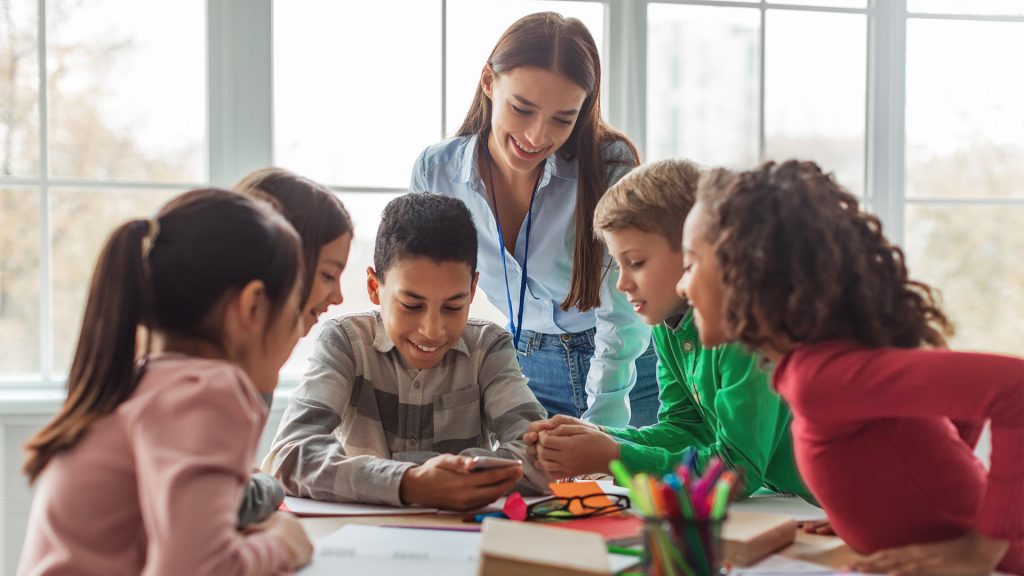
Can Virtual Learning Platforms Replace Classroom Education In K-12 Schools
In the wake of the ongoing global pandemic, the debate whether online learning will effectively replace classroom education or not is once again ignited. While rapidly mushrooming Ed-tech companies are already at it, cashing in on every opportunity with their pompous advertising campaigns trying to dominate the discourse, the question remains is it possible to truly substitute a classroom-based learning environment that involves direct interaction between a teacher and his pupils and peer-to-peer engagements in classrooms with online learning apps and virtual learning platforms?

Learning Tools Vs A Learning System
The claims and propositions that visual and graphical tools help students overcome pertinent difficulties in absorbing and learning
new ideas are well documented. Multiple research demonstrates how when leveraged properly these tools can be highly effective in making students overcome their academic challenges and helps them position themselves better to achieve their learning goals. However, without discrediting the role of evolving online learning systems and tools, it is important to understand that there is no conclusive research-based evidence that indicates online learning can even remotely come closer to being a full-time substitute or an alternative to classroom-based interactive learning. They can function as an additional tool to enhance and expedite the overall learning process though.
Not As Effective Or Economical
Talking about higher secondary education, where the proponents of online learning vigorously emphasize their role to be highly effective and rather indispensable, we find that there is ample conclusive research that proves virtual learning is not as successful – let alone replacing it entirely as an alternative to classroom learning.
Caroline Hoxby in her paper, “The Economics of Online Postsecondary Education: MOOCs, Non-Selective Education and Highly Selective Education,” categorically rules out how online education is only sustainable with non-selective institutions. She also concludes that the popular belief about online learning being economical is also a hoax – all such claims lack substance. In fact, in her paper “The Returns to Online Postsecondary Education,” published in 2017, she finds online education, in many cases, is much more expensive than face-to-face education. Further, when it comes to Return on investment (ROI) in terms of cumulative learning achieved with online learning platforms and those gained in traditional classroom setups, Hoxby finds classroom education is a much better option with a better value proposition. It is also important to note that Hoxby is not alone and many top educational researchers have drawn similar conclusions in their comparative research publications.
Not The Best For Secondary Or Primary Levels Either
At secondary and primary levels, the importance of classroom-based interactive learning for the overall holistic development of a child cannot be stressed enough. There are simply too many elements that contribute to effective learning which are missing in “online learning systems.” Over-dependence on virtual learning platforms and substituting a school and its classroom with virtual learning salons can be detrimental and highly counterproductive.
In-person classroom learning environments in schools have that necessary element of ‘discipline’ – a core component that drives the entire learning process. Virtual learning platforms are built on the premise that both children and teachers will be equally disciplined and dedicated to achieving the common learning goals. The supposition or the hypothesis may work for one odd student and with one odd teacher or a select few students or teachers. Statistical studies focussing on attentiveness during online learning and classroom learning demonstrate a partisan discrepancy. Children are significantly more attentive in real classrooms than on virtual learning platforms. Data collected from multiple studies show that children in the classroom are over 50% less distracted when compared to some popular virtual platforms posing as alternatives.
Students Under-perform When They Rely Only On Virtual Learning Platforms
A comprehensive study conducted in 2015 (Alpert, Couch and Harmon, 2015) has some remarkable insights and evidence-based conclusions to offer. It separated random students in a school into three categories: face-to-face, blended and online. The students in the face to face category were actively learning in the classroom, those in the blended category were taught partly in the classroom and partly through virtual learning platforms and the students in the ‘online’ category were taught virtually with e-learning apps. All three categories were taught the same curriculum over four consecutive semesters.
As a part of the comprehensive two-year-long research, students were assessed with a common assessment test specifically designed to get an accurate understanding of their overall learning during the period. The results were analysed based on the cumulative score of all students in the different categories. Not surprisingly, the online students significantly under-performed than their classroom and blended counterparts.

There’s A Lot That’s Missing!
There are many other aspects of learning such as instilling the primary values, learning how to interact socially, collaborative learning, and extracurricular activities amongst others that cannot be substituted by online learning. Moreover, in classrooms, teachers are trained and experienced to provide that much-needed care and attention to particular students who have special needs as not all students have the same learning abilities.
Remember the goal of education is to prepare a student, especially the younger ones, for every aspect of what they will be facing in their lives. A multidisciplinary approach to ensure the overall holistic and inclusive development of pupils is more likely to take place in the classroom and schools than on virtual learning platforms. The online learning tools and applications can be a great learning accelerator or a set of tools to help students with certain learning difficulties, but if we are to believe educators and educational researchers rather than the buzz created by ed-Tech business enterprises, and if we analyse the facts and figures about the efficiency of these platforms in comparison with classroom-based in-person learning environments we will be able to see through their conspicuous limitations.
No, online virtual learning platforms cannot substitute classroom education; definitely not in K-12 schools.


